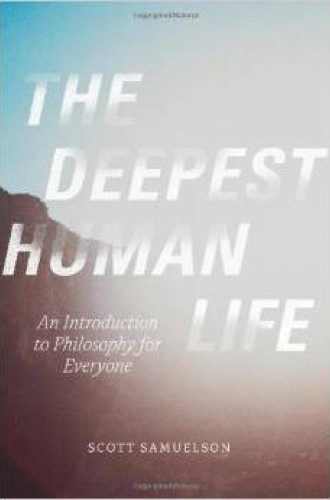The Deepest Human Life, by Scott Samuelson
The word philosophy is derived from the Greek for love of wisdom—not knowledge, mind you, but wisdom. It is cliché to moan that academic philosophy is taken up with abstruse and perhaps insoluble puzzles—secular versions of wondering how many angels can dance on the head of a pin. Socrates famously said that the unexamined life is not worth living. Perhaps the examined life is not worth it either. Why not study something practical instead of spinning your wheels on pseudo problems, as the philosopher Ludwig Wittgenstein put it? That is the suggestion philosopher Peter Unger drives toward in his recently published cannonade, Empty Ideas.
The Deepest Human Life is an elegantly written, impassioned, and sometimes disjointed plea on behalf of philosophy. Author Scott Samuelson, a philosophy professor at Kirkwood Community College in Iowa City, invokes poets, novelists, and theologians to defend the dialectical process that Socrates imparted, obliquely arguing that no matter who you are or what you are doing, self-examination will enrich your world and nurture “the deepest human life.”
Seneca, one of the many thinkers to appear in these pages, taught, “He who studies with a philosopher should take home with him some good thing every day. He should daily return home a sounder man, or on the way to becoming sounder.” If this does not happen, if the pupil only accumulates some knowledge or perhaps becomes an expert in intellectual jujitsu, he is wasting his time. Concurring with Seneca, Samuelson writes, “All ideas under philosophical discussion, in the end, must be judged on their ability to help us live well.” For Samuelson, philosophical inquiry—intellectually probing beneath the floorboards of our basic assumptions—will help us live better lives by augmenting our sense of meaning.





